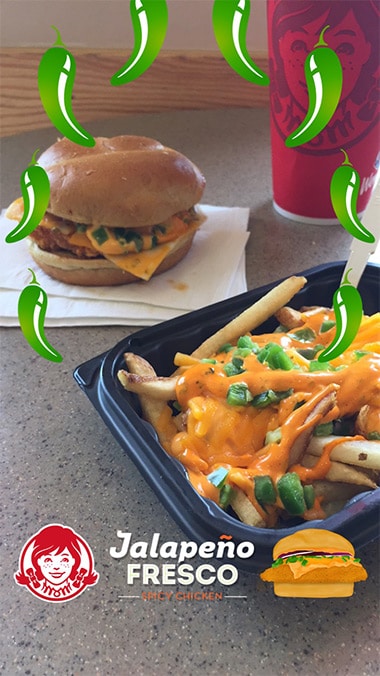A previous Perspective post broke the relationship between advertisers and Snapchat. Now, Snapchat will be giving advertisers more analytics on how their ads are doing to drive foot traffic to brick-and-mortars.
This has stemmed from the ever-growing copy-cat game that companies are now playing. By now you have seen that Instagram has stories and now Facebook has also added stories to their messenger app.
Now business practices are being copied. Snapchat has started to roll out measurements online to offline traffic. Facebook started the tracking method with their ads less than a year ago. Snapchat has also added more ways for marketers to send people from the app to their stores.
This feature is called Snap to Store. It tracks the number of people who use Snapchat in a brand’s physical location. It looks at the number of people who go to a store within one week of seeing one of Snap’s vertical-oriented mobile ads.
Companies that were the first to test include 7-Eleven, Paramount Pictures and Wendy’s.

The Wendy’s ad resulted in more than 42,000 people visiting a restaurant within the seven-day period that Snap to Story tracks. And according to Brandon Rhoten the head of advertising, digital, social and media at Wendy’s, “Foot traffic into our restaurants is the best measurement of short-term sales success for any program—we want more ad tech like this.”
Snapchat can only tell if someone visited a brand’s location if that person uses Snapchat in that location. The company is not tracking people’s location when the app is running in the background.
Snapchat’s Snap to Store measurement shows advertisers how many people who visited their location had seen the brand’s ad on Snapchat. But for privacy reasons, it only occurs when at least 1,00 people have used the app/ad. It also shows how many visitors did not see the ad but used Snapchat. Snapchat is also launching a dashboard that includes a chart plotting the first time people visit a location that uses a 28-day window.
On the downside for smaller businesses, they cannot see Snap to Store measurements for individual locations. In this instance, a geofilter is a much better option.
More Perspectives:
How Good Design Can Help Tell Your Organization’s Story
9 Need to Know eCommerce Terms
How to Use Social Media as a Nonprofit
FAQs
What is Snapchat’s Snap to Store feature?
Snap to Store is a feature that tracks the number of Snapchat users who visit a brand’s physical location after viewing an ad on Snapchat. It measures foot traffic by monitoring how many users go to a store within one week of seeing a vertical mobile ad, providing valuable data for advertisers.
How does Snapchat protect user privacy with Snap to Store?
Snapchat only tracks users who actively use the app at a brand’s location, and it does not monitor users’ locations when the app runs in the background. Additionally, Snap to Store measurements are only available when at least 1,000 people have used the app in connection with an ad, ensuring user anonymity and privacy.
Can small businesses use Snapchat’s Snap to Store feature?
While small businesses can access Snap to Store, they cannot see measurements for individual locations due to data limitations. For smaller-scale tracking, using Snapchat’s geofilters might be a more suitable and effective option to engage local customers and analyze their reach.
How does Snapchat’s Snap to Store compare with Facebook’s tracking method?
Snapchat’s Snap to Store is similar to Facebook’s online-to-offline tracking method, which was launched less than a year prior. Both platforms provide insights into how digital ads drive foot traffic to physical stores, but Snapchat’s approach specifically ties foot traffic to Snapchat activity within the store location.
